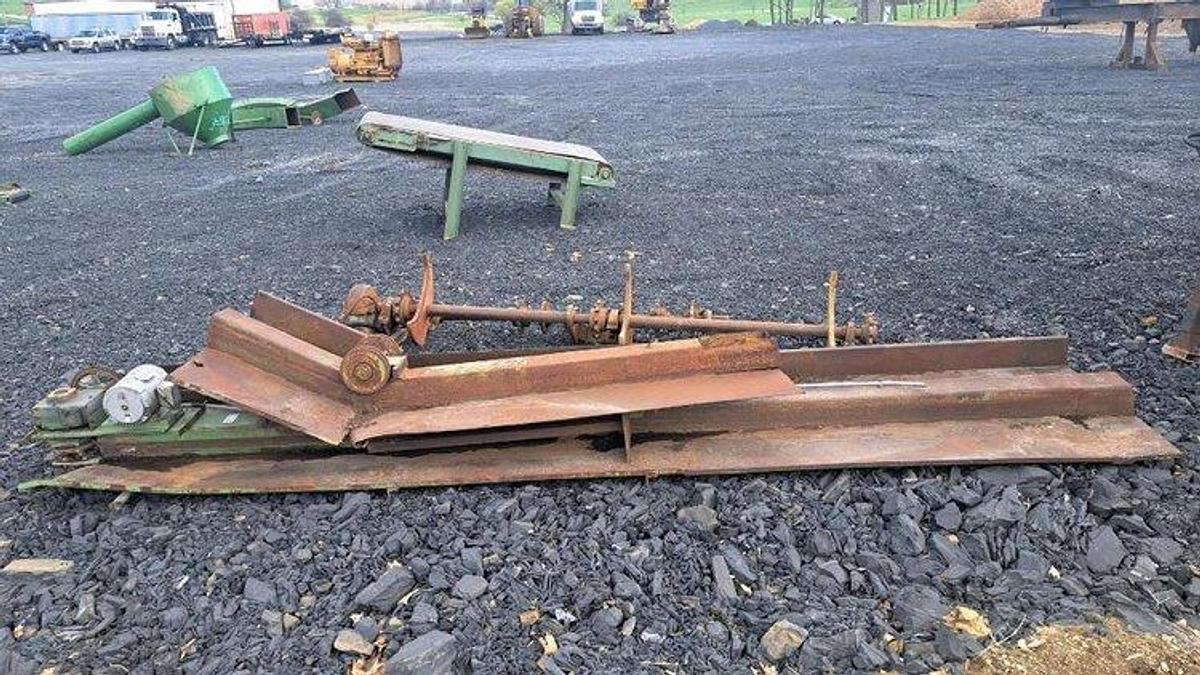Featured

ProCut Chop saw
Pro-Cut chop saw, up-cut style, 7" x9" cutting capacity, 22" dia blade, includes 8' infeed/outfee...
DetailsFeatured

Step Feeder
Linden step-feeder for logs, 16' long capacity, 15 hp electric powered hy unit, good working cond...
DetailsFeatured

Circle Mill
Hurdle 3 head-block circle mill, includes 4 blade Cedar Creek vertical edger, includes log deck, ...
DetailsFeatured

ProCut Chop saw
Pro-Cut chop saw, up-cut style, 7" x9" cutting capacity, 22" dia blade, includes 8' infeed/outfee...
DetailsFeatured

Step Feeder
Linden step-feeder for logs, 16' long capacity, 15 hp electric powered hy unit, good working cond...
DetailsFeatured

Circle Mill
Hurdle 3 head-block circle mill, includes 4 blade Cedar Creek vertical edger, includes log deck, ...
DetailsFeatured

ProCut Chop saw
Pro-Cut chop saw, up-cut style, 7" x9" cutting capacity, 22" dia blade, includes 8' infeed/outfee...
DetailsFeatured

Step Feeder
Linden step-feeder for logs, 16' long capacity, 15 hp electric powered hy unit, good working cond...
DetailsFeatured

Circle Mill
Hurdle 3 head-block circle mill, includes 4 blade Cedar Creek vertical edger, includes log deck, ...
Details
150 KW Cummins Diesel enclosed Generator
The 150 KW Cummins Diesel enclosed Generator is a robust power solution, ideal for various applic...
Details
Hy Power Unit
hyd power unit, 40 hp electric, vane type pump, includes cooling radiator, approx. 120 gallon cap...
Details
Vibrating Conveyor
Webster vibrating conveyor, 18" wide pan x 25' long, electric drive, includes chipper feed spout,...
Details
Dual Load-Out System
chip loading system with dual load-out chutes, good working condition Make: Unknown | Stock number: 10377
Details
Cedar Hill Welding Mat Drill Machine
New in 2016, this portable mat drilling machine features a like-new 56" drill bit and is powered ...
Details
36" Eagle Dust Blower
The 36" Eagle dust blower is an efficient solution for various industrial cleaning needs. This us...
Details
Shaker Screen
Precision 5' x5' shaker screen, includes cyclone and dual chip-loading system, good working condi...
Details
25' Gooseneck Trailer
This 25' Gooseneck Trailer, categorized under Trailer-Flatbed, has recently undergone refurbishme...
Details
Complete Smicksburg Band Mill with Cornell Edger Setup
This used sawmill setup includes several key components for efficient milling operations. The set...
Details
Waste Conveyor
Reckart barn sweep, flat & incline sections, electric drive, working condition Make: Reckart | Stock number:...
Details
Dust Blower
Reckart dust blower, 29" dia, 10" inlet- 8" outlet, good working condition Make: Reckart | Stock number: 10375
Details
Brand New Rollcase
This brand new rollcase offers a practical solution for moving pallets efficiently. It features 6...
Details
Waste Grinder
Challenger waste grinder, 200 hp electric drive, 51" wide capacity, 1-1/2" screen, good condition...
Details
Complete Shingle & Shakes Mill
In operation until recently. 125kw 3ph. John Deere gen-set w/2500 hrs. after rebuilt. Foley saw s...
Details
6 Cylinder Continental Engine
The 6 Cylinder Continental Engine is a robust and reliable power unit commonly employed in variou...
Details
855 Cummins Generator
The Cummins Generator 200 DC is an exceptional piece of equipment that has been fully rebuilt by ...
Details
3412 Caterpillar Power Unit
The Caterpillar 3412 Natural Gas Power Unit is a reliable and efficient solution for a range of p...
Details
Slab Drop Belt
slab drop belt, 24" wide x 10' long, built for left-hand mill, air cylinder for up-down motion, g...
Details
Double End Trimmer
Go-Fast double end trim saw, electric drive, 4" x 8' capacity, good working condition Make: Go-Fast | Stock ...
Details
Single Head Resaw
Morgan single head resaw, has return belt, electric drive, good working condition Make: Morgan | Stock numbe...
Details
Complete Morbark Debarker Setup
The complete Morbark debarker setup offered includes essential components for efficient log proce...
Details
Drop Belt Conveyor
drop belt 24" wide x 11' long, electric drive, air cylinder for up-down movement, good working co...
Details
Montgomery Circular Sawmill
The Montgomery Circular Sawmill is a used piece of equipment designed for efficient milling opera...
Details
Slab Drag Conveyor
slab drag waste conveyor, 10' 6" wide x 20' long, has steel slats to drag waste/ slabs, electric ...
Details
Concave Belt Conveyor
concave style belt conveyor, 32" wide belt x 95' long, electric drive, has cat-walk on the side, ...
Details
4221 Select Band Sawmill & Sharpening Equipment
The Select 4221 Band Sawmill is a robust piece of used industrial equipment, designed for efficie...
Details
Complete Chip-Pac
Precision 6 knife chipper and chip-pac, includes Precision 6' x6' shaker screen and cyclone, pric...
Details
Vibrating Conveyor
Precision vibrating conveyor, 18" wide pan x 27' long, 10" tall sides, electric drive, good worki...
Details
Vibrating Conveyor
Precision vibrating conveyor, 18" wide pan x 20' long, 10" tall sides, electric drive, good worki...
Details
Single Head Resaw
This used Single Head Resaw, comparable to a Morgan model, is available for purchase. It features...
Details
Pacific Trail Bar Cut-Off Saw
The Pacific Trail Bar Cut-Off Saw is a reliable tool designed for cutting through 4-foot bundles ...
Details
Transfer Deck
3 strand transfer deck, 7' wide x 11' long, lineshaft ready, good working condition Make: Unknown | Stock nu...
Details















